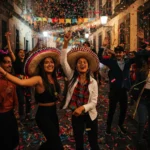Cappadocia, a region in central Turkey, is a place of surreal beauty and historical significance. Its unique landscapes, rich history, and cultural heritage make it an ideal destination for travelers. Here’s an expanded guide for those planning to explore Cappadocia.
Fairy Chimneys and Unique Landscapes
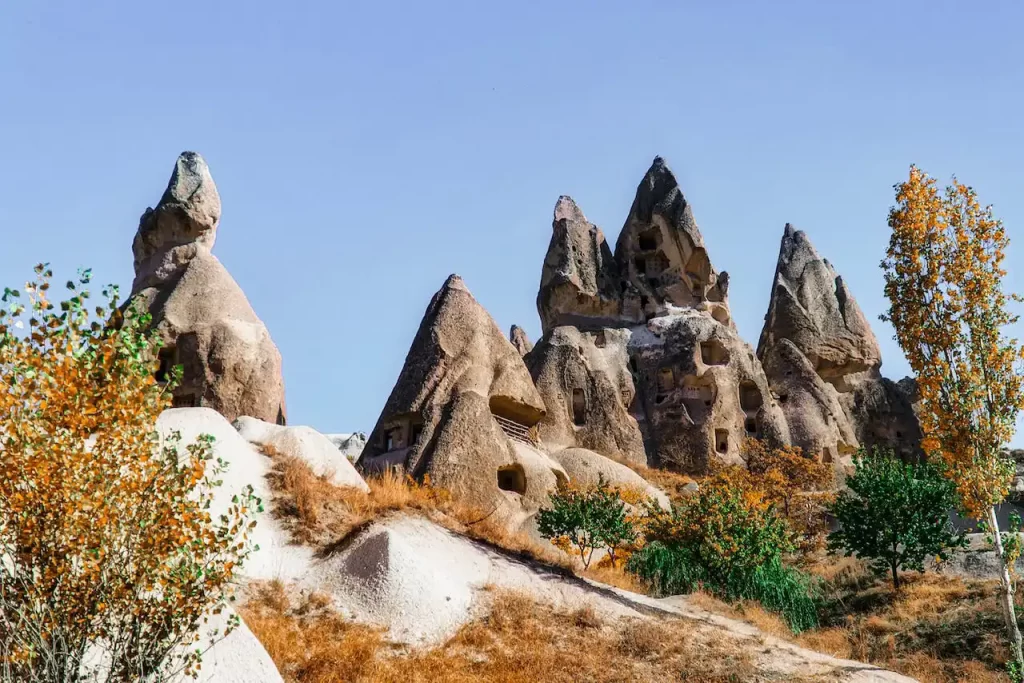
Cappadocia’s most iconic feature is its fairy chimneys, towering rock formations created by ancient volcanic eruptions and erosion. These geological wonders, often topped with boulders, form a landscape that seems plucked from a fantasy novel. The Devrent Valley, also known as Imagination Valley, showcases some of the most whimsical formations, where natural rock structures resemble animals and mythical creatures.
The region’s unique geology is not limited to above ground. Cappadocia hosts a network of subterranean dwellings and cities, carved out of the soft rock. These underground cities, like Derinkuyu and Kaymakli, were historically used as refuges. Today, they offer a fascinating glimpse into ancient survival strategies.
Visitors can explore these landscapes through various activities. Hiking is popular in valleys like Rose and Pigeon Valley, revealing hidden churches, caves, and stunning vistas. Horseback riding tours offer a more leisurely pace to absorb the scenery, while mountain biking caters to adventure enthusiasts.
Hot Air Balloon Rides in Cappadocia
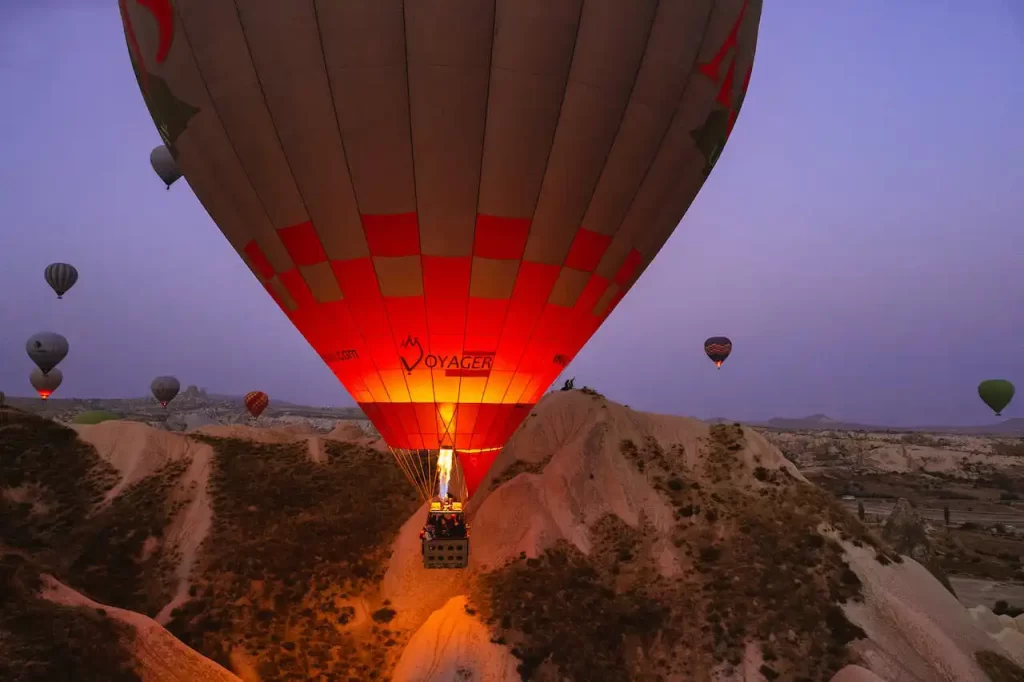
One of the most magical experiences in Cappadocia is a hot air balloon ride. As the sun rises, hundreds of colorful balloons ascend, offering panoramic views of the fairy chimneys, vineyards, and distant mountains. This activity is not just about the breathtaking views; it’s an opportunity to appreciate the vastness and serenity of the region from a bird’s-eye perspective.
The balloon rides typically last about an hour and end with a traditional champagne celebration. While it is a year-round activity, the best conditions are usually from April to November. It’s advisable to book in advance due to the popularity of this experience.
Underground Cities and Cave Hotels
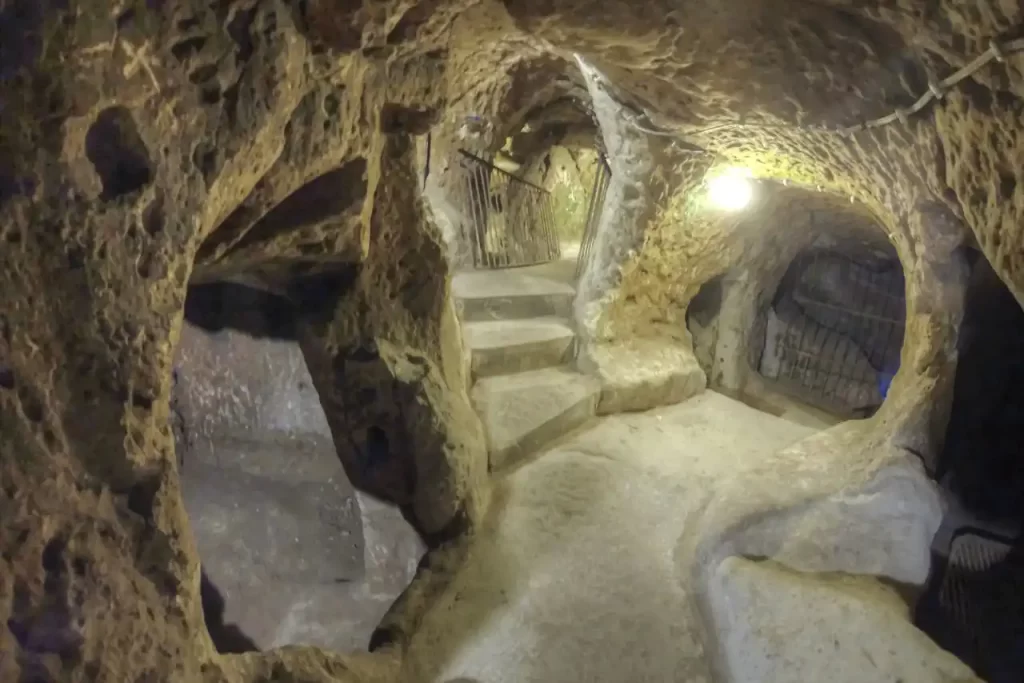
The underground cities of Cappadocia, some dating back to the 7th century BC, are an architectural marvel. The most famous, Derinkuyu and Kaymakli, descend several levels into the earth, featuring rooms, churches, and storage facilities, all interconnected by tunnels. Originally built by the Phrygians, these cities were expanded by early Christians as hideouts.
Besides exploring these subterranean wonders, visitors can also stay in cave hotels. These hotels, carved into the rock, provide a unique lodging experience, combining ancient ambiance with modern comforts. They range from luxurious to modest, but all offer a taste of Cappadocian history.
Rich History and Culture
Cappadocia’s history is as rich as its landscapes are stunning. It has been a crossroads of civilizations, including the Hittites, Romans, and Byzantines. This diverse heritage is evident in its historical sites, like the Goreme Open-Air Museum. This UNESCO World Heritage site features rock-cut churches and monasteries adorned with well-preserved frescoes, showcasing Byzantine art.
Cultural traditions are also alive in Cappadocia. The town of Avanos is known for its pottery, a craft passed down through generations. Visitors can try their hand at the potter’s wheel and purchase handmade ceramics as souvenirs. Traditional Turkish cuisine, like the pottery kebab, offers a culinary exploration of the region’s flavors.
Hiking and Outdoor Activities
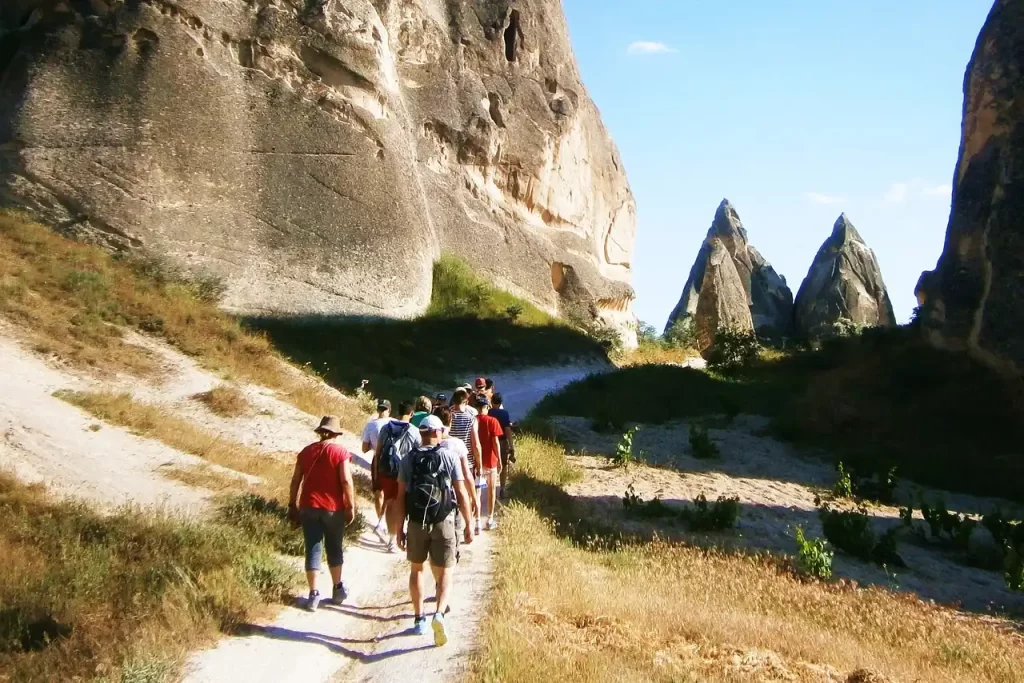
Cappadocia is a paradise for hikers and outdoor enthusiasts. Trails meander through valleys and rock formations, revealing hidden churches, orchards, and vineyards. Popular routes include the Ihlara Valley, a 16-kilometer gorge with rock-cut churches, and the Love Valley, known for its phallic rock formations.
Besides hiking, Cappadocia offers horseback riding, known locally as “horse safari,” and mountain biking. These activities provide different perspectives of the landscape and cater to various fitness levels.
Traditional Turkish Cuisine and Crafts

Turkish cuisine in Cappadocia is a delightful experience. Dishes like Testi Kebab, cooked in a sealed clay pot, and local wines offer a taste of the region’s culinary traditions. Cooking classes are available for those interested in learning these recipes.
The town of Avanos is the center of Cappadocia’s pottery-making tradition. Here, red clay from the Kızılırmak River is shaped into beautiful ceramics. Visitors can watch artisans at work and purchase handcrafted souvenirs.
Respectful and Responsible Tourism
As with any travel destination, visitors to Cappadocia should practice responsible tourism. This involves respecting local customs, preserving the natural environment, and supporting local businesses. By traveling responsibly, visitors help ensure that Cappadocia’s cultural and natural heritage is preserved for future generations.
Best Time to Visit
The best time to visit Cappadocia is during the spring (April to June) and fall (September to November). During these months, the weather is mild, and the tourist crowds are smaller. The region’s landscapes are particularly stunning in spring when wildflowers bloom.
Getting Around
Renting a car is one of the most convenient ways to explore Cappadocia, offering flexibility to visit remote sites. However, local tour companies also offer guided tours, which can be beneficial for those unfamiliar with the area. Public transportation is available but may be less flexible.
Safety and Local Customs
Cappadocia is generally safe for tourists. Standard travel safety practices, such as safeguarding belongings and staying informed about local conditions, are recommended. Understanding and respecting local customs will enhance the travel experience and foster positive interactions with locals.
Frequently Asked Questions (FAQs)
- Is Cappadocia safe for solo travelers? Cappadocia is considered safe for solo travelers, but standard safety precautions should be observed.
- Can I visit the underground cities if I’m claustrophobic? Some parts of the underground cities can be narrow and low. If you’re claustrophobic, consider visiting the larger, more open sections or consult with a guide.
- Are there any cultural practices I should be aware of in Cappadocia? Respect local customs, dress modestly when visiting religious sites, and always ask permission before taking photos of people.
- What should I pack for a trip to Cappadocia? Pack comfortable walking shoes, a hat, sunscreen, and layers for varying temperatures, especially if you plan to go on a hot air balloon ride.
- Do I need to tip in Cappadocia? Tipping is customary in Turkey. Consider tipping guides, drivers, and restaurant staff.











